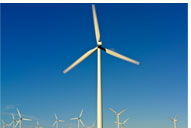




| CCRI-Net |
| Viksit Bharat @2047 – Technology Pathways towards Climate Action: SDG13 |
-Dr. (Mrs) Malti Goel |
The mission “Viksit Bhart @ 2047” aims to transform India into a fully developed nation by 2047. The mission is a continuation of “Shatabdi Sankalp” for the 100th year of independence, launched during Azadi ka Amrit Mahotsav. Global climate change is the most contentious issue of our times. Climate extremities; heat waves, excessive rainfall in deserts, floods and draughts are becoming everyday threat. A climate resilient growth in Viksit Bharat willprovide sustainability and security to each and every citizen from the looming crisis of climate emergencies. In 2015, the United Nations adopted 17 Sustainable Development Goals (SDGs) to be achieved by 2030. The SDG 13 (Climate Action) aims to combat climate change and its impacts by taking urgent action. Through education, science based solutions and technology innovation, we can take climate action. Climate science has shown that anthropogenic activities and their accumulation of greenhouse gas (GHG) emissions in the atmosphere are contributing to global warming and climate change. A clean environment and zero greenhouse gas emissions (net) are vital not only for our good health but also for the wellbeing of future generations. In response to the international protocols, India has set 2070 as the target year for achieving net-zero. From the current year 2024 to the year 2070; India @2047 stands in the middle of its journey for sustained growth. Taking 3Es i.e. Energy, Environment and Education as basic growth parameters, their technology trajectories for emission reduction will depend on the investment and availability of technologies for achieving economies of scale. Let’s talk about energy first. India’s Panchamrit Action Plan includes reaching 50 per cent cumulative electric power installed capacity from non-fossil fuel-based energy resources by 2030 and reducing the emissions intensity of its GDP by 45 per cent. In Viksit Bharat, energy should fulfill the key concerns of access, availability, and affordability for each and every citizen. Climate change has added a fourth dimension to it, i.e., reduction of greenhouse gas emissions. India has prioritized a clean energy transition to combat climate change, while keeping three key concerns in mind. A number of policy-level changes have taken place in the last ten years to make access and affordability and a drive towards the availability of clean energy accessible to all. The renewable energy (RE) capacity by 2030 is targeted to reach 500 GW. By 2047, India is aiming to significantly increase its emission-free energy capacity so as to have a share of 80–90% of the total kitty with adequate battery storage capacity. India's transition to electric vehicles (EVs) would accelerate by 2047, providing people with options for charging their vehicles from their own solar rooftop. Green hydrogen will be a solution for electrical vehicles. The use of hydrogen in automobiles, especially heavy-duty vehicles, would grow and take over battery storage electric vehicles. Flexible grid infrastructure and storage to support the integration of renewable energy would be vital. The challenges of innovation, investment, and scaling up technologies are going to be significant and can only be resolved by dynamic policies and industry participation. India is the world's third-largest coal producer, with coal production approaching 1 billion tons in 2024. Current energy systems are fossil fuel-dominated. It is anticipated that coal deployment will have to continue for the next 2 or 3 decades. Though clean coal technologies of coal gasification and coal washing will proliferate; for clean environment adoption of carbon capture and storage (CCS) technologies for removal of excess carbon dioxide in the atmosphere would become a reality. This would mean capturing carbon from its ‘point sources’ and disposing of it away from the atmosphere in geological formations (CCS) or its conversion into fuels and value added products (CCU). India started CCS R&D in the 2000s, with the objective to develop capacities for level playing field with other countries and not to become a market or testing ground for this emerging technology. However, CCS technology has been slow to pick up and faces many challenges due to its high cost and energy penalty. Till date there are 41 commercial projects across the globe with a capacity to sequester nearly 65 million tons of CO2 per year. For carbon dioxide removal (CDR) many other possibilities such as CO2 sequestration in coastal restoration zones, in wetlands and by direct air capture (DAC) exist and have demonstrated significant growth in recent years. Soil carbon mineralization and ocean fertilization are other more permanent storage options. With supportive policies and incentives, these would significantly contribute to emissions reduction efforts. In 2047, accelerated progress in the deployment of CCS technologies for ‘scrubbing CO2’ from point sources and CDR technologies for ‘sucking CO2’ from the atmosphere would be fundamental to contributing to our emissions reduction efforts. In order to move away from the current fuel-based systems and towards 24x7 energy supply, digitization is essential. Application of digital technology would enhance the effectiveness, dependability, and sustainability of systems involving a high degree of fluctuations from renewable energy sources compared to the stability of current fuel-based systems. The local ‘digital compass’ will serve as a framework for identifying different locations and evaluating the different elements, such as data on intermittent clean energy with space and time variations, available technology, state legislation, market dynamics, and consumer wants. For a clean energy transition to be successful, it would be necessary to combine production-based logic with service-based logic in industries such as steel, power, transportation, chemicals, and other commercial bodies. Climate change education is not yet part of the school curriculum, and awareness is lacking in more than 65% of populations in India. Although National Educational Policy 2020 places adequate emphasis on climate change education in schools and colleges, the engagement of citizens in understanding climate change, its impacts, and the importance of sustainable practices would need to be strengthened. Civil societies can have a prominent role. Mission LiFE (Life Styles for Environment), an India-led global mass movement is aiming to promote sustainable lifestyles and introduce environmentally friendly culture and traditional practices for emission reduction. The adoption of the mantra LiFE: ‘Lifestyle for Environment to Combat Climate Change’ can bring behavioural change in every individual, rich or poor. To sum up, the energy transition towards a clean energy economy would see advancements in science and technology such as in CDR (including CCS) technologies, move towards green hydrogen production, and digitalization of RE through smart grids not only in generation but also in demand sectors. With the dynamic policy portfolio in the energy sector, public-private partnerships, carbon pricing mechanisms and green credits, India will take a quantum jump towards clean energy, clean environment in Viksit Bharat, having citizens more aware, participative, and not adversely impacted by climate fluctuations. India@2047, a developed nation in my opinion will be more technology savvy and more conscious of climate action, while having 100% access to energy and education.
|
